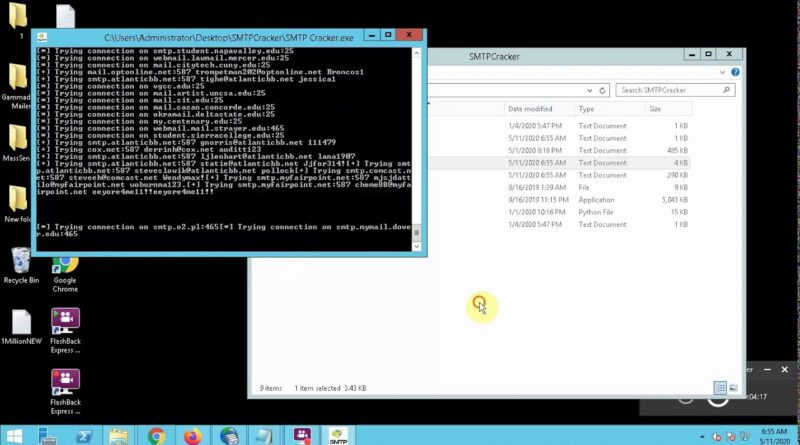

But, once the table is ready, it is capable of cracking passwords much faster than tools using brute force. The results are then stored in the rainbow table. Time & memory trade-off is a process of computation where all plain text and hash pairs get calculated by using a chosen hash algorithm. It falls in the hash cracker tool category that utilizes a large-scale time-memory trade off process for faster password cracking compared to traditional brute force tools. However, it can still be used in the current times. This tool hasn’t been updated for years now. Using these features, one can halt the attack process any time and then resume whenever one would want to resume. Resume and Load are two of its good features. This tool supports the multi-stage authentication engines and is also capable of connecting with 60 simultaneous targets. One can also create his own types of authentication. HTTP for Basic Authentication, Pop3, Telnet, HTTP (HTML Form/CGI), FTP, SMB, and other types such as NetBus, IMAP, NNTP, etc.
#Smtp cracker password list free
It is available free of cost and can only be operated in Windows. Brutus claims to be the fastest paced and flexible password cracking tool. One of the widely used remote online tools used for password-cracking is Brutus.

This attack was ingeniously invented by Philippe Oechslin, based on the application of an algorithm by Martin Hellman. Space & time’s trade-off’s practical example using less time in/for processing and extra storage capability than the brute force attack which computes a hash at every attempt, but involves more time for processing and lesser storage than table of lookup with an entry a hash. up to a limited length which consists of a limited group of characters. This technique proves to be good for recovering plaintext passwords, debit card numbers, etc. It is a precomputed table for reversing cryptographic hash functions, mostly used for cracking password hashes. The dictionary attack’s execution time is reduced because the number of combinations is restricted only to those on the list. However, the coverage is less and a good password may not be on the list and will be missed.

The dictionary is more likely to include real words than random strings of characters. The dictionary is based on the patterns or combinations that were observed across a massive number of users to determine the most commonly used patterns. It may be based on the knowledge of one or a few key information about the target (family member names, birthday, etc.). The dictionary/possible combinations are based on some possible values and tend not to consider options of remote possibility. Options which are likely to work are only tried in this attack and not all options are gone forward with. Dictionary AttackĪn attack which is based on estimation guessing using precompiled lists of options. An advanced brute force attack can make certain assumptions like complexity rules require uppercase, first character more likely to be upper than lower case. The time taken to complete is relatively more, but there are more chances of coverage of likely clear text value (all possibilities only if set to the maximum length and every possible character is considered in every position). It is like a combination lock which requires three numbers to be taken in sequence one tries every possible combination - e.g., First 1-2-3, then 1-2-4.Ī brute force attack may not try all options in sequential order. The number of attempts get restricted by the number of characters and maximum length that is to be tried per position (or a byte if we are considering Unicode passwords too). In this type of attack, the hacker tries to determine the password by trying every possible combination of characters.
#Smtp cracker password list crack
Types of Cybersecurity Attacks which aim to crack passwords: 1. Industries in which passwords are a high priority: Sometimes it can be a strenuous process if it’s a bank account or an online resource of similar importance. On the event of losing a password due to inability of recollection, there are certain processes through which a person may have to go to bring back or change the password. It is used to gain access to various accounts, repositories, and databases but at the same time, protects them from unauthorized access.Īs much as it is important to create an undecipherable password, it is important for it to be stored in human brain with the ease of its recollection. A secret string of characters is used for the authentication process in various applications is called a password.


 0 kommentar(er)
0 kommentar(er)
